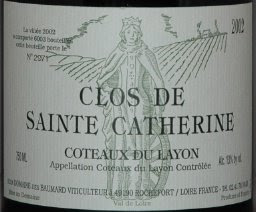My First 2006 Red Burgundies.
They're calling 2006 a "classic" vintage in Burgundy, which means that it was a normal year. In a normal year good wine makers make good wine. If their better plots are not hit with hail, rot, late rains, extended dry spells, or other challenges that growers typically face, they might make great wine. In other words, a classic years brings normal successes and difficulties, which then brings some great wines, some bad wines, and everything in between. For example, although Michel Lafarge's Volnay 1er Cru Caillerets might be wonderful, his Volnay 1er Cru Château des Ducs might be a bit of a mess. I discovered this in 2001 when hail ravaged that vineyard - something I didn't bother to read about until after buying the wine.
If you're a fan but like me, don't have the cash or the time to do the research yourself, luckily there are a few others who do it for us. Most notably Allen Meadows in Burghound , the wonderfully detailed and completely down to earth publication that describes everything you need to help make buying decisions. There are also loads of tasting notes and scores, but it's up to you to determine whether or not his 93 point score translates to your personal 93, whatever that may be. But that's part of the fun.
Meadows in Burghound Issue #29 says, among other things, about the 2006's: "At their best, the ‘06s are indeed classic Burgundies that are exceptionally aromatic and elegant with the best transparency to the underlying terroir since the 2001's." He goes on to say that "At their worst, the ‘06s are under ripe, over extracted and dry as wine makers tried to compensate for the lack of mid-palate density by amping up the tannin component, which hides, for a period anyway, the absence of concentration but at the cost of ultimately unbalancing the wine."
"Classic," or normal vintages in Burgundy can often present good value (although prices haven't really dropped much from the astronomical 2005's), but can require lots of splashing around in order to identify the wines you like enough to buy multiple bottles. I don't get to do that kind of extensive tasting, but I got a good start at the Polaner tasting a few weeks ago.
Domaine Lignier-Michelot, Morey-St Denis - I am a huge fan of the '05s from this estate. On the whole, I found most of the village level 06's to be pretty much closed, and except for the highest level wines, the tannins were drying to a point that felt under-ripe. But I am not experienced enough to understand these wines in the context of their long life - maybe they'll be wonderful down the road. I liked the perfumed and clean 2006 Morey-St Denis en la Rue de Vergy. And I really liked the 2006 Morey-St Denis 1er Cru Faconnières, which was more dense in aroma and flavor, but still elegant and pretty. An excellent wine to be sure.
But it was the 2006 Grand Cru Clos de la Roche that made me cry tears of joy. Honestly, I was almost crying. Tasting 6 wines, from village level to Grand Cru, its impossible to miss the pedigree, the incredible bone structure, the depth of character of a Grand Cru. This one felt more like a solid in my mouth than a liquid, if you know what I mean. It had that much texture, between the fine grained but firm tannins and the clean ripe fruit. This is what luxury wine should feel like in the mouth, to me. Oh, and it tasted great too, with well defined red berry and earth flavors, and maybe black tea. There plenty going on in this wine, and I'm sure it has much to reveal with time. I doubt I will buy any, as I'm sure it will cost $150 or more per bottle, but it was a great experience to taste it.
Catherine & Claude Maréchal, Bligny-les-Beaune - These naturally made wines are popular here and in France right now, as they offer high quality and good value. I've enjoyed Maréchal's wines since 2002, always finding a particular wine that I like enough to buy a few bottles. On the whole, I was not loving the 2006 lineup. They were tough in general, with somewhat green and astringent tannins. Again, I don't have the expertise to say what will happen with these wines, but based on my initial tasting, the only wine that I really liked was the Pommard La Chânière, a wine I also loved in 2005.
Anyone out there care to share their experiences thus far with 2006 Burgundy? We'd all appreciate the group think, to be sure.






















